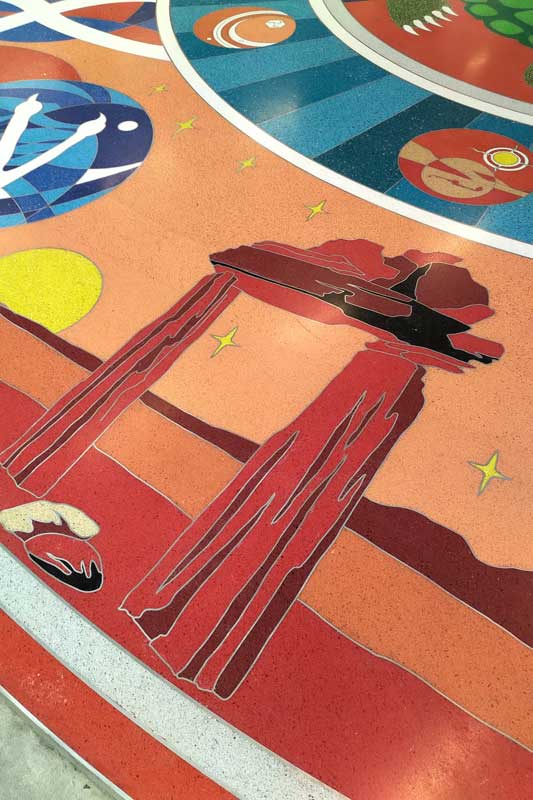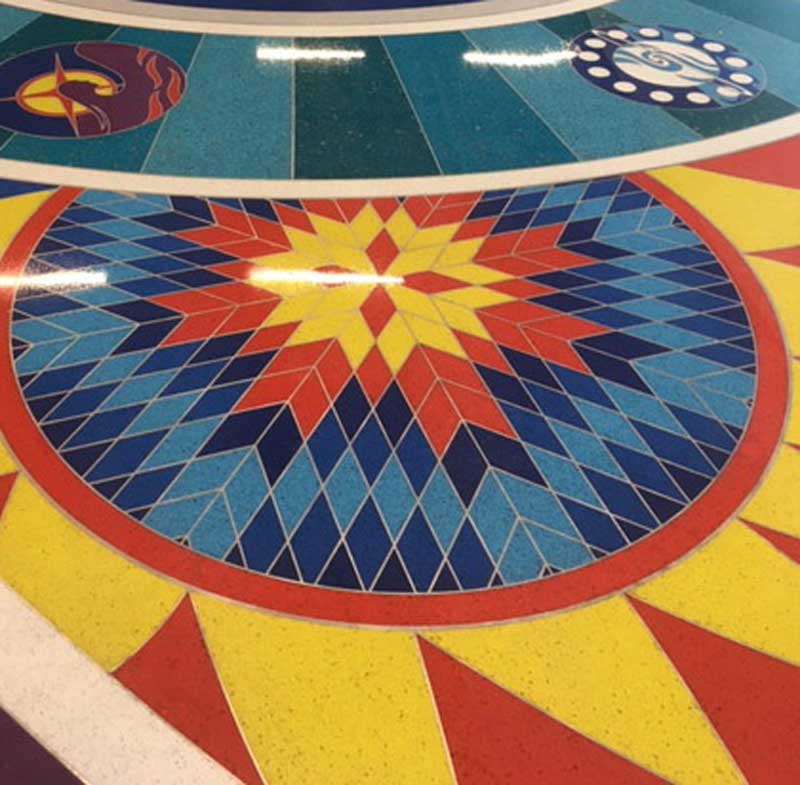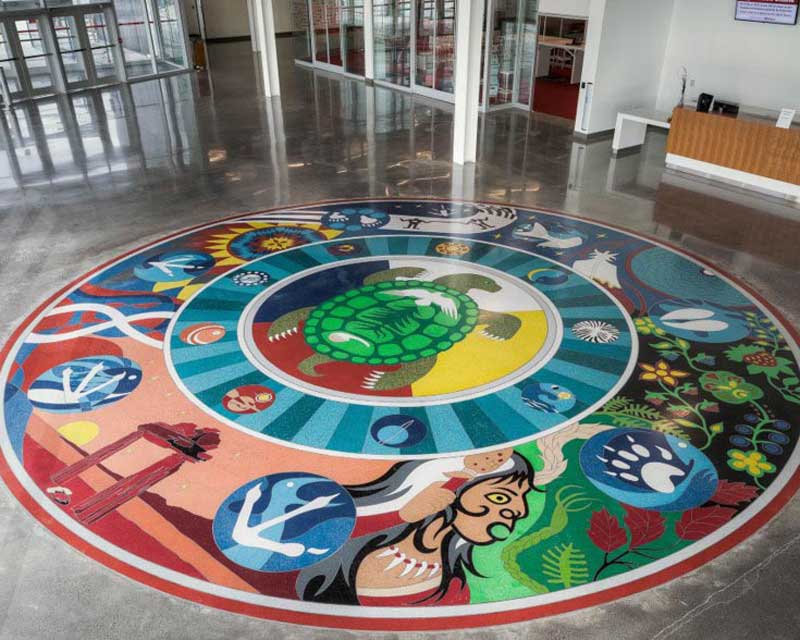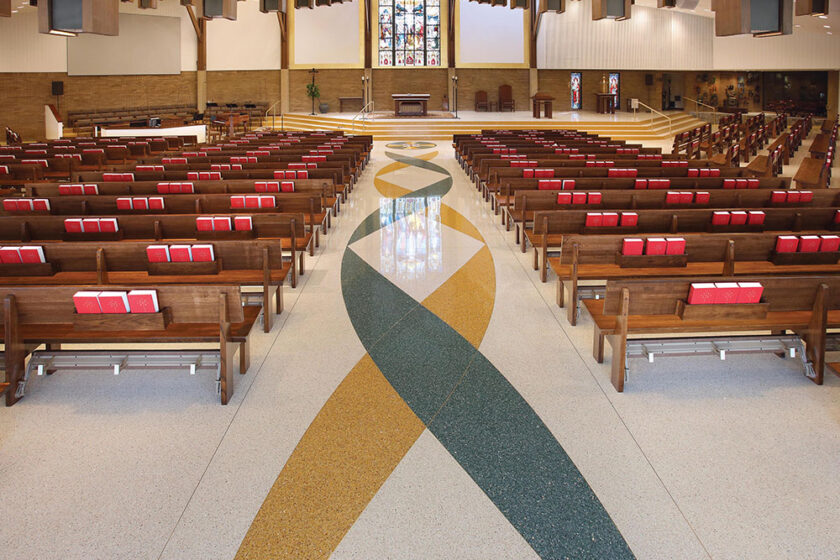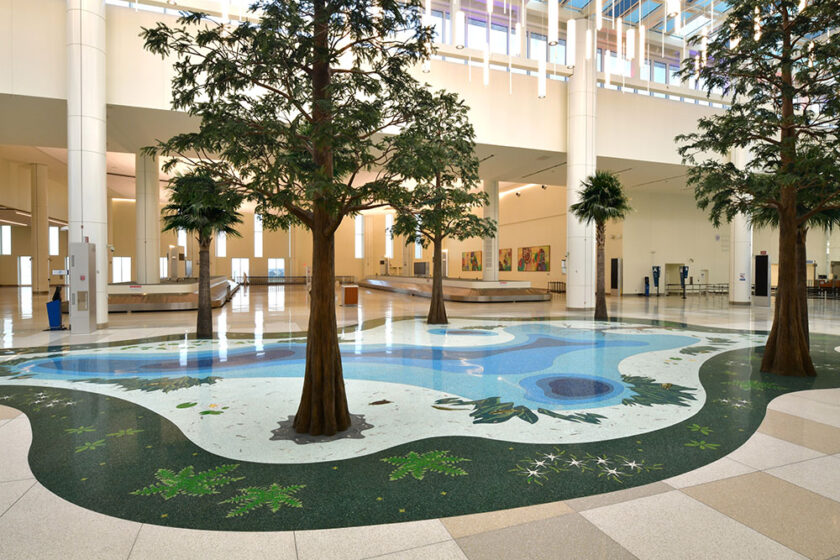Award-Winning Terrazzo Installation Illustrates Local History and Folklore
When the Toronto-based Seneca College of Applied Arts and Technology needed a design for their new terrazzo floor, they turned to an inspired source: the local indigenous community.
Joseph Sagaj, a member of the Neskantaga First Nation, was selected to create a design for a terrazzo floor for its new Centre for Innovation, Technology and Entrepreneurship (CITE) at the Newnham Campus.
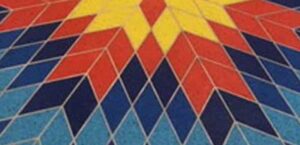
“It is significant that our people are being featured in a prominent place that is honoring our knowledge-sharers and elders,” said Sagaj, adding that the project was an opportunity for him to learn the “old ways” from his community. “The theme is we are one strand of the web of life.”
The artist worked with representatives of the various clans to develop and approve the elements of his design. It combines cultural elements of First Nations people of the Great Lakes Region, the Metis, and the Inuit of the Arctic.

In the medallion’s center, a turtle—its bright eye a single mirror chip—represents Mother Earth. In an indigenous creation tale, North and Central America emerge like a turtle from the water-covered earth. The medallion is oriented to true north, indicated by the head of the turtle. The colors around the turtle stand for the four points of the compass and the different peoples of the earth. Moving outward, a second ring showcases nine planets, each with its own traditional tale, referring to an interconnection with the entire universe of creation.
Below the turtle in the outer ring is an inuksuk: an iconic stone landmark as found throughout Canada. A ceremonial gateway to the spirit world and memorial to the dead, it’s set against the rosy backdrop of the winter midnight sun. Moving around the circle we find the figure-eight symbol of the Métis people and a “star blanket,” with its seven-pointed star in gold, red, and blue, a ceremonial gift of welcome. Another Métis symbol is composed of human figures of different colors linking hands, followed by a blue dream-catcher and floral ornamentation representing native beadwork.
Superimposed around the outer rings are the symbols of indigenous clans. A sturgeon’s tail and the footprints of deer, marten, loon, crane, eagle, and bear, each has its particular role in the society and government of the region’s original peoples. The red ring rimming the medallion is school color of Seneca College.
To create this panoramic palette, epoxy terrazzo in 22 vibrant colors was blended with chips of white and clear glass, mirror, and marble in a complex waterjet-cut aluminum divider strip pattern to form a 10-meter diameter medallion. The terrazzo contractor, Franklin Terrazzo Company of Chatham, Ontario, worked closely with the artist to execute this intricate and striking work of art. Multiple color samples were produced to ensure that his vision was translated accurately onto the floor.
The medallion was completed in just 15 days. It also met the objective for the college: a highly durable floor to last the lifetime of the building.
One of the year’s top terrazzo installations, “Circle of Indigenous Knowledge” was Named Project of the Year in 2019 by the Terrazzo, Tile and Marble Association of Canada. It is also a recipient of a 2020 Honor Award from the National Terrazzo & Mosaic Association, based in Texas.
Architect: Perkins+Will
Photographer: McNeill Photography
